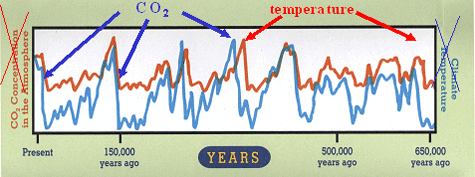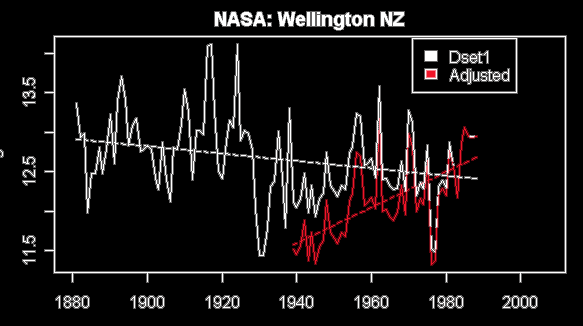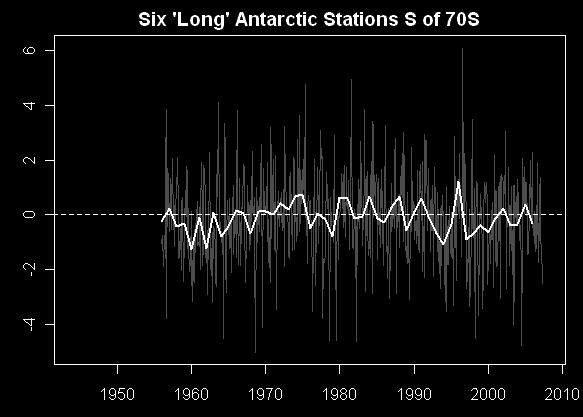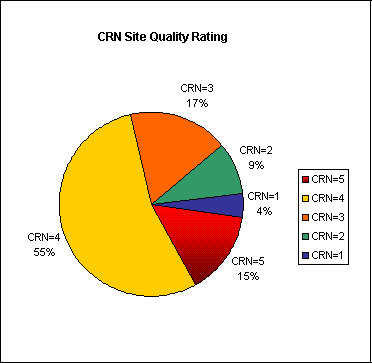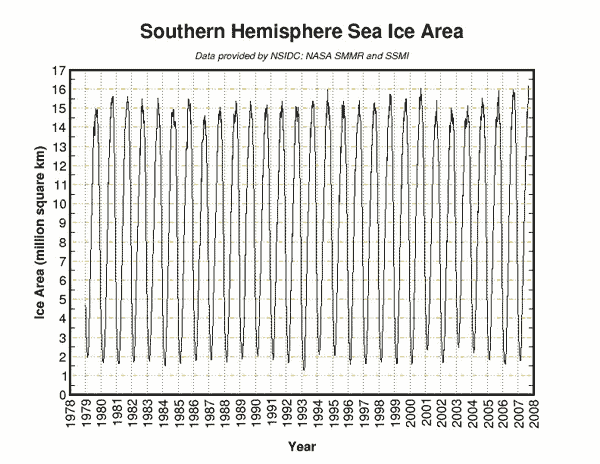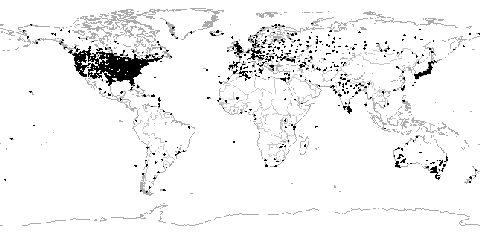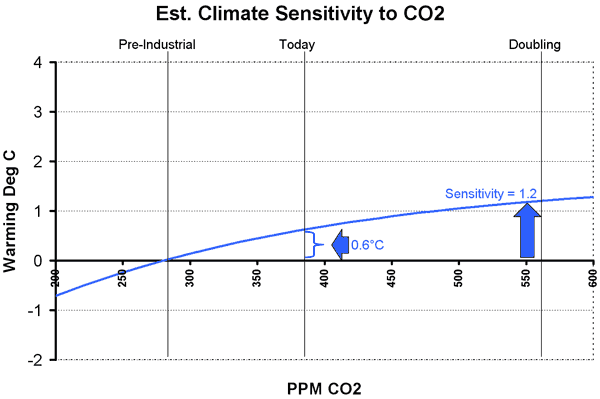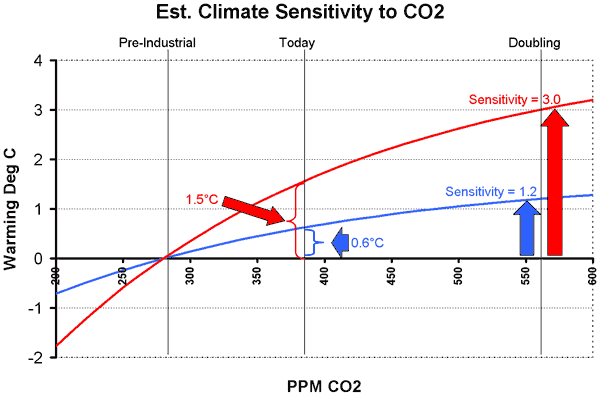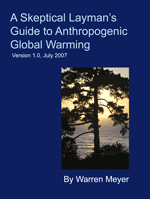The table of contents for the rest of this paper, A Layman’s Guide to Anthropogenic Global Warming (AGW) is here. Free pdf of this Climate Skepticism paper is here and print version is sold at cost here.
We know the temperature of the Earth has increased over the last half of the 19th century and most of the 20th century as the world has exited a particularly cold period called the Little Ice Age. One of the odd coincidences that colors our judgment about climate trends is that man began systematically measuring temperatures in the early to mid-nineteenth century just as the world was beginning to exit what was perhaps the coldest period of the last millennia. Throughout their study of climate trends, scientists have to try to parse warming that is a natural result of exiting this cyclical cold period from warming that is perhaps due to man’s influence.
We know further, from laboratory work, that CO2, and more importantly water vapor, in the atmosphere serves to keep the Earth warmer than it would be in their absence. What we don’t know, in fact what we have no empirical proof for, is if rising CO2 levels over the last century (caused in part by man’s combustion of fossil fuels) has caused some or all of the 20th century warming. The fact that we have no empirical evidence for this man-made effect on climate doesn’t mean it is not true, but it is something we should not forget in all this debate. What we have instead are historical correlations in the data, far from perfect, that seem to show some relationship over history between CO2 and temperature. Some find this data to be compelling evidence of cause and effect, and others do not.
Before we start, since this paper is by definition somewhat in opposition to the core of Anthropogenic Global Warming (AGW) theory, it would be useful to state in simple terms just what that theory is. The strong AGW hypothesis is roughly as follows:
1. The world has been warming for a century, and this warming is beyond any cyclical variation we have seen over the last 1000 or more years, and beyond the range of what we might expect from natural climate variations.
2. Almost all of the warming in the second half of the 20th century, perhaps a half a degree Celsius, is due to man-made greenhouse gasses, particularly CO2
3. In the next 100 years, CO2 produced by man will cause a lot more warming, from as low as three degrees C to as high as 8 or 10 degrees C.
4. Positive feedbacks in the climate, like increased humidity, will act to triple the warming from CO2, leading to these higher forecasts and perhaps even a tipping point into climactic disaster
5. The bad effects of warming greatly outweigh the positive effects, and we are already seeing the front end of these bad effects today (polar bears dying, glaciers melting, etc)
6. These bad effects, or even a small risk of them, easily justify massive intervention today in reducing economic activity and greenhouse gas production
In the rest of this paper, we will focus on potential weaknesses in this hypothesis. Specifically, I will argue that:
There is no doubt that CO2 is a greenhouse gas, and it is pretty clear that CO2 produced by man has an incremental impact on warming the Earth’s surface.
However, recent warming is the result of many natural and man-made factors, and it is extraordinarily difficult to assign all the blame for current warming to man.
In turn, there are very good reasons to suspect that climate modelers may be greatly exaggerating future warming due to man. Poor economic forecasting, faulty assumptions about past and current conditions, and a belief that climate is driven by runaway positive feedback effects all contribute to this exaggeration.
As a result, warming due to man’s impacts over the next 100 years may well be closer to one degree C than the forecasted six to eight. In either case, since AGW supporters tend to grossly underestimate the cost of CO2 abatement, particularly in lost wealth creation in poorer nations, there are good arguments that a warmer but richer world, where aggressive CO2 abatement is not pursued, may be the better end state than a poor but cooler world.
In Chapter 2, we will address whether it is even appropriate to be a skeptic. Of late, several AGW supporters have declared the science “settled,” and skeptics the equivalent of tobacco lawyers or holocaust deniers. We will also look at the issue of bias, not just for skeptics but for AGW supporters as well.
In Chapter 3, we will cover a bit of background on Anthropogenic Global Warming (AGW) theory. We will learn some things about the CO2 greenhouse effect you have probably never heard in the media, such as the fact that warming from CO2 is actually a diminishing return phenomenon whose effect is asymptotic or essentially capped, making it hard to understand the prevalence of wild, open-ended temperature runaway scenarios.
In Chapter 4, we will review the historic empirical evidence for AGW theory. We will find that the science of historic climate reconstruction is still in its infancy, and a lot of uncertainty exists in the data. We will see that over the last several years, while correlations between CO2 and temperature exist in the data, much of the historical circumstantial evidence for AGW theory has gotten weaker, and we will cover “global dimming” and see if this effect makes the case for AGW stronger.
In Chapter 5 we will cover the absolutely fascinating topic of climate models. Most of what you have seen in the media is the output of complex climate models. We will find that there is a lot less here than meets the eye.
In Chapter 6 we will study several alternate explanations for recent warming that don’t involve man-made greenhouse gasses. Most prominent in these theories is the changing output of the sun.
In Chapter 7 we take on the scare stories – the lions and tigers and bears of climate reporting. In the movie An Inconvenient Truth, Al Gore caught the world’s attention with prophecies of seas rising twenty feet, hurricanes and tornados running rampant, and species dying. We will find that most of these claims are thought to be wild exaggerations even by scientists who support AGW theory.
In Chapter 8 we finally get to the Kyoto Treaty, explain its origins and shortcomings, and briefly discuss some policy alternatives. We’ll seriously consider whether a cooler but poorer world is really superior to a warmer but richer world.
Finally, in Chapter 9, we will consider AGW supporter’s rebuttals of some of these arguments. For this version, we will use the New Scientist’s recent 26 Global Warming Myths as a platform for this discussion.
My Goals For This Paper
The purpose of this paper is to provide a layman’s critique of the Anthropogenic Global Warming (AGW) theory, and in particular to challenge the fairly widespread notion that the science and projected consequences of AGW currently justify massive spending and government intervention into the world’s economies. This paper will show that despite good evidence that global temperatures are rising and that CO2 can act as a greenhouse gas and help to warm the Earth, we are a long way from attributing all or much of current warming to man-made CO2. We are even further away from being able to accurately project man’s impact on future climate, and it is a very debatable question whether interventions today to reduce CO2 emissions will substantially improve the world 50 or 100 years from now.
I am not a trained expert on the climate. I studied physics at Princeton University before switching my major to mechanical engineering, where I specialized in control theory and feedback loops, a topic that will be important when we get into the details of climate change modeling. For over ten years, my business specialty was market prediction and sales forecasting using modeling approaches similar to (if far less complex than) those used in climate.
My goal for this paper is not to materially advance climate science. However, I have found that the global warming skeptic’s case is seldom reported well or in any depth, and I wanted to have a try at producing a fair reporting of the skeptic’s position. I have been unhappy with several of the recent documentaries outlining the skeptic’s case, either because they skipped over a number of critical issues, or because they over-sold alternate warming hypotheses that are not yet well understood. To the inevitable charge that as a non-practitioner, I am not qualified to write this paper –I believe that I am able to present the current state of the science, with a particular emphasis on the skeptic’s case, at least as well as a good reporter might, and far better than most reporters actually portray the state of the science. Through this paper I will try to cite sources as often as possible and provide links for those who are reading this online, this report is best read as journalism, not as a scientific, meticulously footnoted paper.
Years ago, another man not trained in climate started a PowerPoint presentation of what he knew about Global Warming. Over time, he used it both as a vehicle for communication as well as a living document that would evolve over time to reflect his improving knowledge. A lot of people saw Al Gore’s PowerPoint presentation, and it became the backbone for the movie An Inconvenient Truth. I hope to use this paper the same way, as an evolving document to reflect my evolving knowledge. To this end, each version will get a software-like version number and date.
Before proceeding, I want to make one note on nomenclature. The terms global warming and climate change are often used interchangeably, and generally are used in a way that imply man-made causes. For example, when many people speak of global warming, they are actually talking about anthropogenic global warming, meaning warming of the Earth from man-made causes, generally the release of greenhouse gasses including CO2. Of course the climate can, and does, change without man’s help and the Earth can warm without man-made gasses. I will try to be precise in my terminology. I will use global warming to mean literally an increase in Earth’s surface temperatures, no matter what the cause. I will use anthropogenic global warming, or AGW, to mean the theory that man is causing some or all of the current warming.
Finally, any abuse of copyrighted material or mistakes in attribution are entirely unintentional. Such problems, as well as any comments, should be sent to the author at the email address on the cover.
The table of contents for the rest of this paper, A Layman’s Guide to Anthropogenic Global Warming (AGW) is here. Free pdf of this Climate Skepticism paper is here and print version is sold at cost here.
The open comment thread for this paper can be found here.


